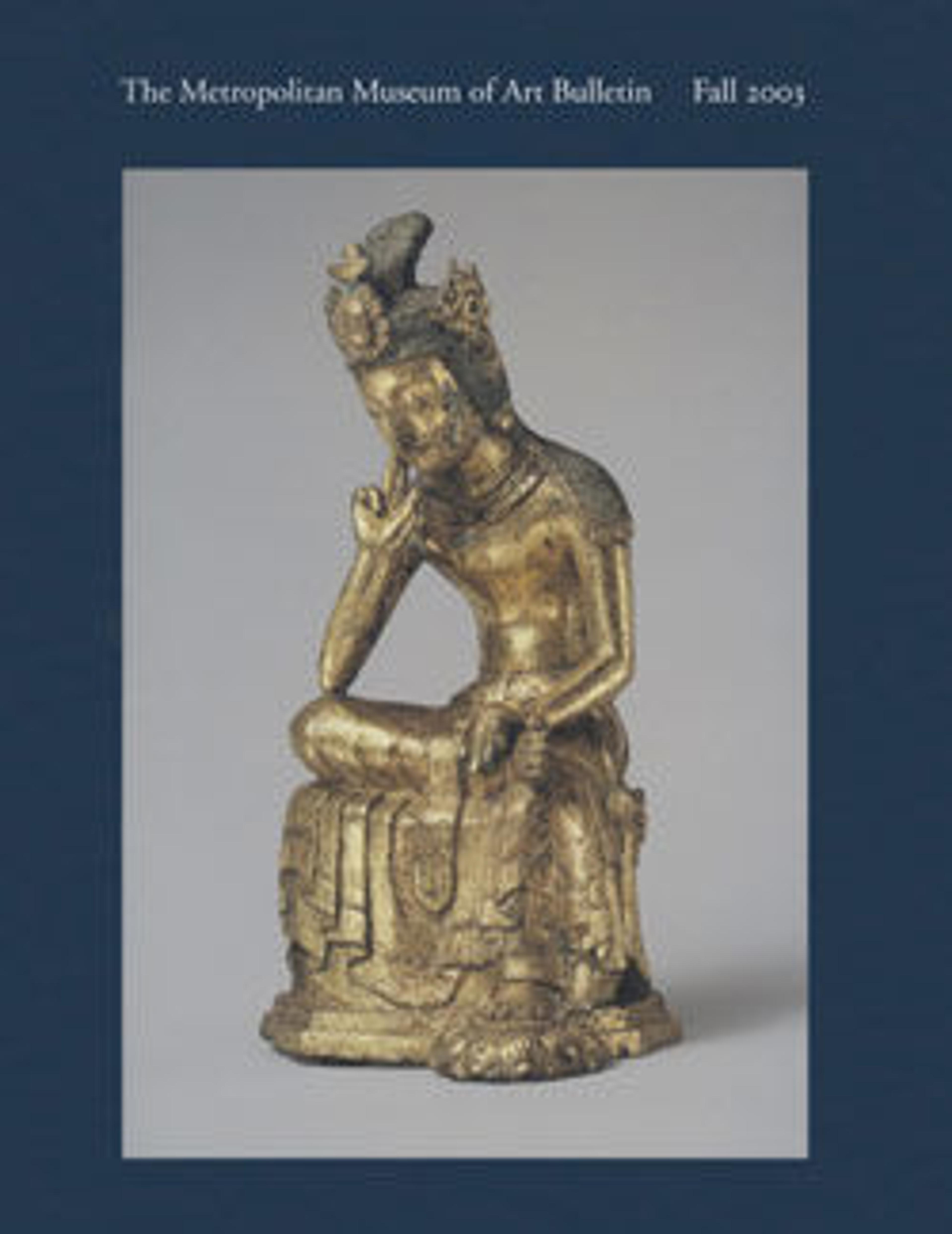Horsemanship Competition for the Shunzhi Emperor
This long handscroll documents one of the celebratory events accompanying the entrance of the Shunzhi emperor (r. 1644–61) into Beijing shortly after the fall of the Ming dynasty to the Manchus. Painted by a Manchu artist, it is among the earliest examples of Qing courtly painting known and suggests the unsophisticated nature of Manchu art prior to the sinicization of the court under the Kangxi emperor (r. 1662–1722). The scroll is not only of great historical interest but also serves as a striking foil to The Kangxi Emperor's Southern Inspection Tour (acc. no. 1979.5) of about 1697, which reflects the impact of mainstream Chinese culture on court patronage.
The painting which is probably a preparatory sketch, presents a file of horsemen each performing a different riding stunt (below). At the right end two rows of imperial bodyguards flank two horsemen who are about to perform. Five men blow conches to announce the next rider, while two officers, one identified by a peacock feather in his cap, direct. Each rider was originally accompanied by two label strips naming his pose and military unit. All of the horsemen belong to one of the three highest-ranking of the eight "banners" that divided the Manchu army.
The painting which is probably a preparatory sketch, presents a file of horsemen each performing a different riding stunt (below). At the right end two rows of imperial bodyguards flank two horsemen who are about to perform. Five men blow conches to announce the next rider, while two officers, one identified by a peacock feather in his cap, direct. Each rider was originally accompanied by two label strips naming his pose and military unit. All of the horsemen belong to one of the three highest-ranking of the eight "banners" that divided the Manchu army.
Artwork Details
- 清 那爾敦布 順治皇帝進京之隊伍賽馬全圖 卷
- Title:Horsemanship Competition for the Shunzhi Emperor
- Artist:Nardunbu (Manchu, active mid-17th century)
- Period:Ming dynasty (1368–1644)
- Date:dated 1662
- Culture:China
- Medium:Handscroll; ink and color on paper
- Dimensions:Image: 8 in. × 54 ft. 7 in. (20.3 × 1663.7 cm)
- Classification:Paintings
- Credit Line:Purchase, The Dillon Fund Gift, 2002
- Object Number:2002.328
- Curatorial Department: Asian Art
More Artwork
Research Resources
The Met provides unparalleled resources for research and welcomes an international community of students and scholars. The Met's Open Access API is where creators and researchers can connect to the The Met collection. Open Access data and public domain images are available for unrestricted commercial and noncommercial use without permission or fee.
To request images under copyright and other restrictions, please use this Image Request form.
Feedback
We continue to research and examine historical and cultural context for objects in The Met collection. If you have comments or questions about this object record, please contact us using the form below. The Museum looks forward to receiving your comments.
